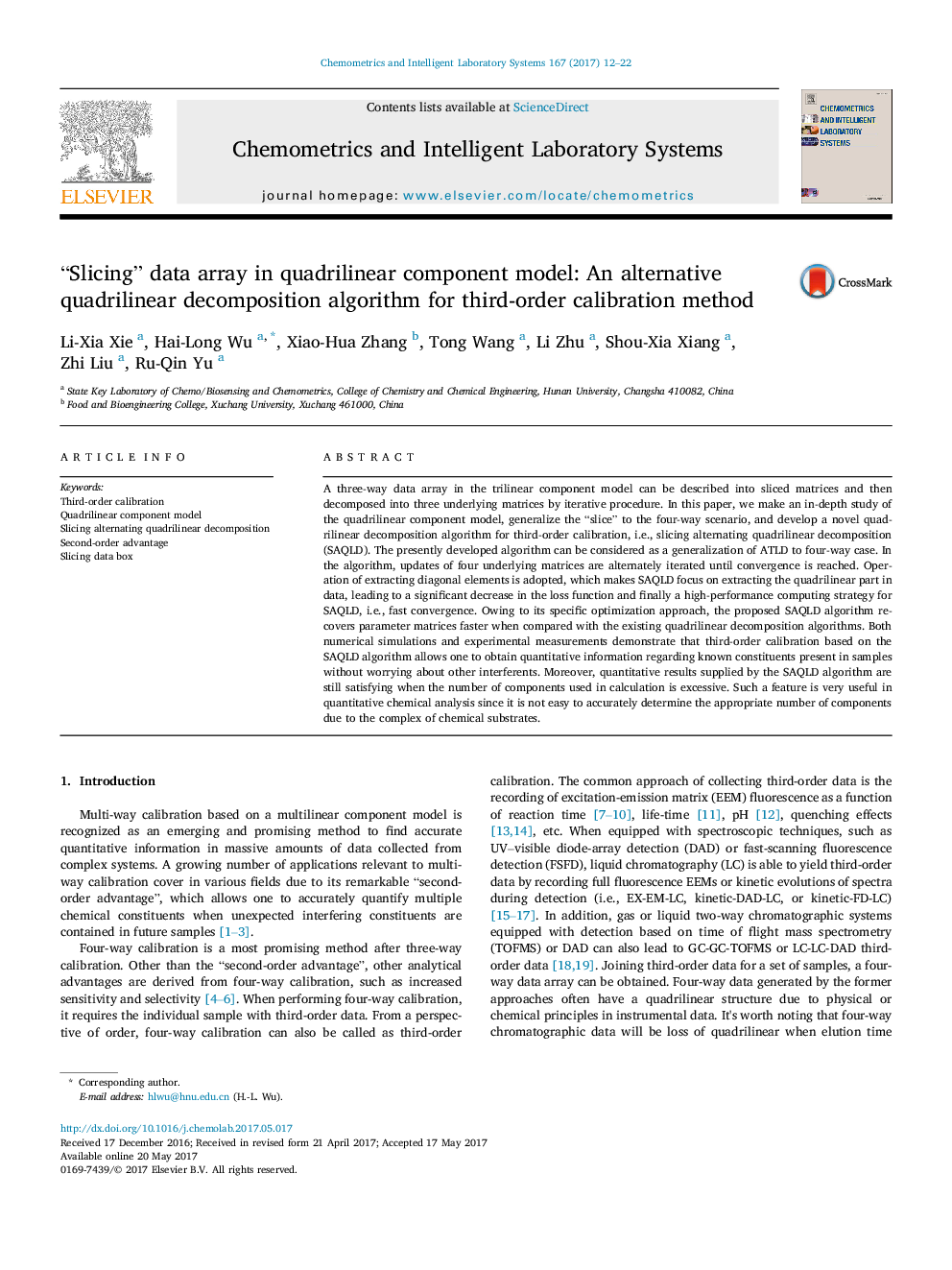| Article ID | Journal | Published Year | Pages | File Type |
|---|---|---|---|---|
| 5132165 | Chemometrics and Intelligent Laboratory Systems | 2017 | 11 Pages |
â¢A proper generalization of the “slicing” concept to the four-way case is made.â¢Multiplication of a higher-order tensor by a matrix will be newly established.â¢A new slicing alternating quadrilinear decomposition algorithm is proposed.â¢It achieves quadrilinear decomposition, preserving the inner structure.â¢It has a fast convergence and overcomes severe collinearity.
A three-way data array in the trilinear component model can be described into sliced matrices and then decomposed into three underlying matrices by iterative procedure. In this paper, we make an in-depth study of the quadrilinear component model, generalize the “slice” to the four-way scenario, and develop a novel quadrilinear decomposition algorithm for third-order calibration, i.e., slicing alternating quadrilinear decomposition (SAQLD). The presently developed algorithm can be considered as a generalization of ATLD to four-way case. In the algorithm, updates of four underlying matrices are alternately iterated until convergence is reached. Operation of extracting diagonal elements is adopted, which makes SAQLD focus on extracting the quadrilinear part in data, leading to a significant decrease in the loss function and finally a high-performance computing strategy for SAQLD, i.e., fast convergence. Owing to its specific optimization approach, the proposed SAQLD algorithm recovers parameter matrices faster when compared with the existing quadrilinear decomposition algorithms. Both numerical simulations and experimental measurements demonstrate that third-order calibration based on the SAQLD algorithm allows one to obtain quantitative information regarding known constituents present in samples without worrying about other interferents. Moreover, quantitative results supplied by the SAQLD algorithm are still satisfying when the number of components used in calculation is excessive. Such a feature is very useful in quantitative chemical analysis since it is not easy to accurately determine the appropriate number of components due to the complex of chemical substrates.
